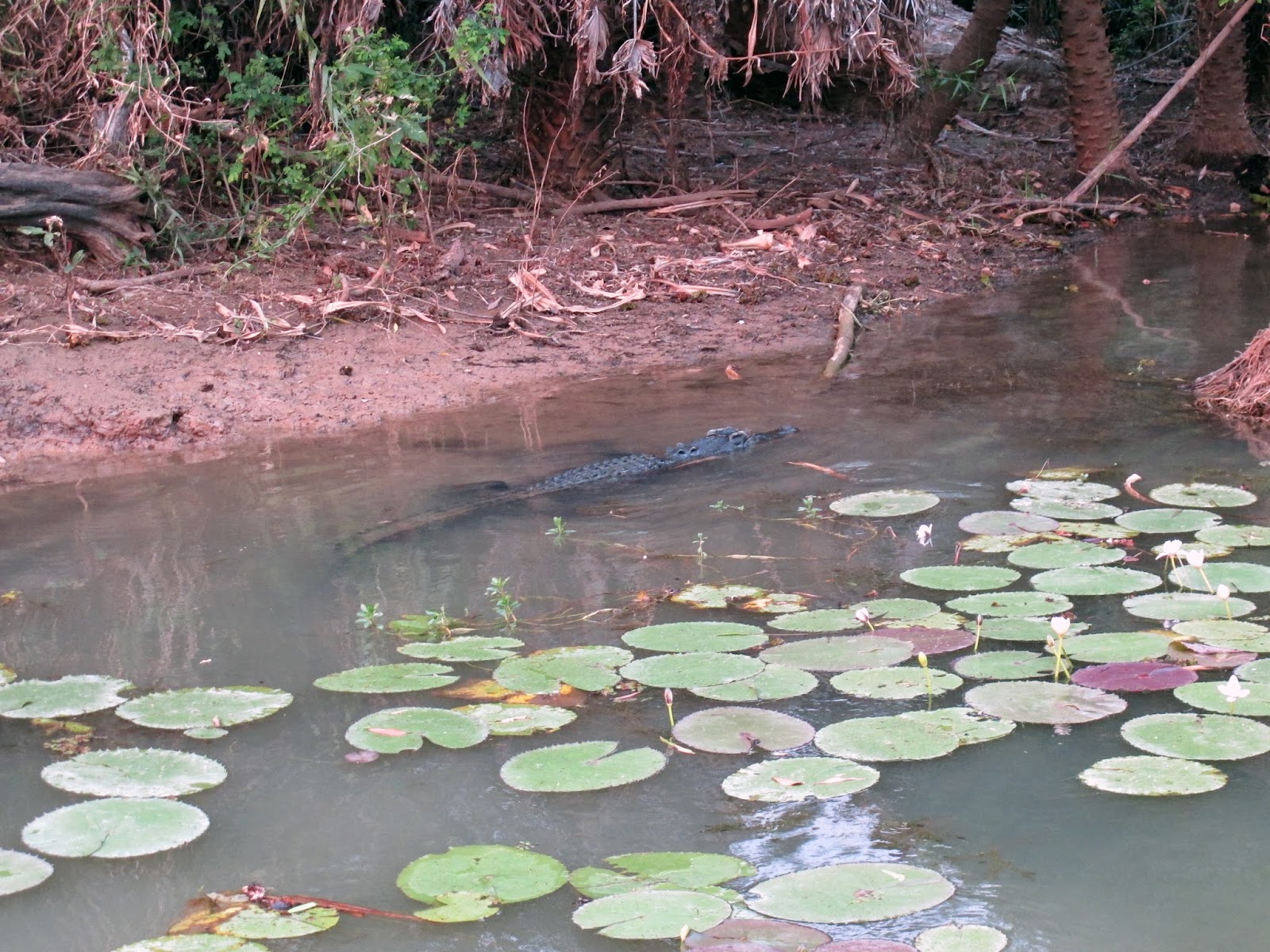After a very pleasant day in Litchfield National Park and a relaxed evening at our camp at the Adelaide River Showgrounds we refueled our van and picked up our journey southwards on the Stuart Highway. This was a very easy drive and we were soon back at Pine River, ready for a comfort stop and morning tea.
 |
| Pine Creek Railway Resort |
Remembering the very excellent lunch we had enjoyed at the Pine Rivers
Railway Resort on our way north we were soon inside appreciating the
aircon and very pleasant surroundings.
 |
| Barramundi Burger |
 |
| Crumbed Barramundi |
Our next stop was, once again, at Katherine where we refueled and stocked up on groceries. With the benefit of hindsight, we should have stayed here and made a day trip to the Katherine Gorge however we planned to stay three nights in the Nitmiluk camp ground to allow plenty of time to take some of the easier walks and cruise the gorges. This plan was soon abandoned when we were directed into the extremely crowded caravan section where the spaces allocated were mere car parks. Yes. Slightly longer but not at all wider. Officials were constantly making their rounds admonishing those who dared to hang a towel to dry. Even without the three school groups that were camped out in the open in the central grassy area, the ablutions blocks would have been inadequate. At 11pm, after an hour of waiting, we gave up waiting, in the long line which extended well out of the bathroom area, for a shower and went to bed unwashed. When I awoke at 2am feeling hot and uncomfortable I thought that I could have a shower then. Wrong! Teenage girls were occupying the showers, having an enjoyable holiday chat while fixing their hair! They were happy enough to accommodate me when I asked that, if they were not in a hurry, could I please go next for my shower.
This park, minus the peak time crowds, would be a lovely place to stay.
 |
| Nitmiluk [ Katherine Gorge] |
In the evening we took a three gorge sunset cruise. At one point we had to disembark and walk a well signposted path on the rocks to board a second boat. The process was repeated on the way back. This would be impossible for anyone with mobility issues.
 |
| Escarpments Katherine Gorge |
The cruise was a very tranquil event. We came across some people taking a dip then, a short distance later, we saw a couple of crocodiles on a sandbank, enjoying the last of the sun. Brave people!
Others were canoeing back to base after what must have been a lovely day exploring the gorges - there are thirteen of them.
 |
| Nitmiluk, Katherine Gorge, Northern Territory |
 |
| small kangaroos at Nitimiluk National Park |
After just one night we obtained a refund for two nights and went on our way back into Katherine.






























































